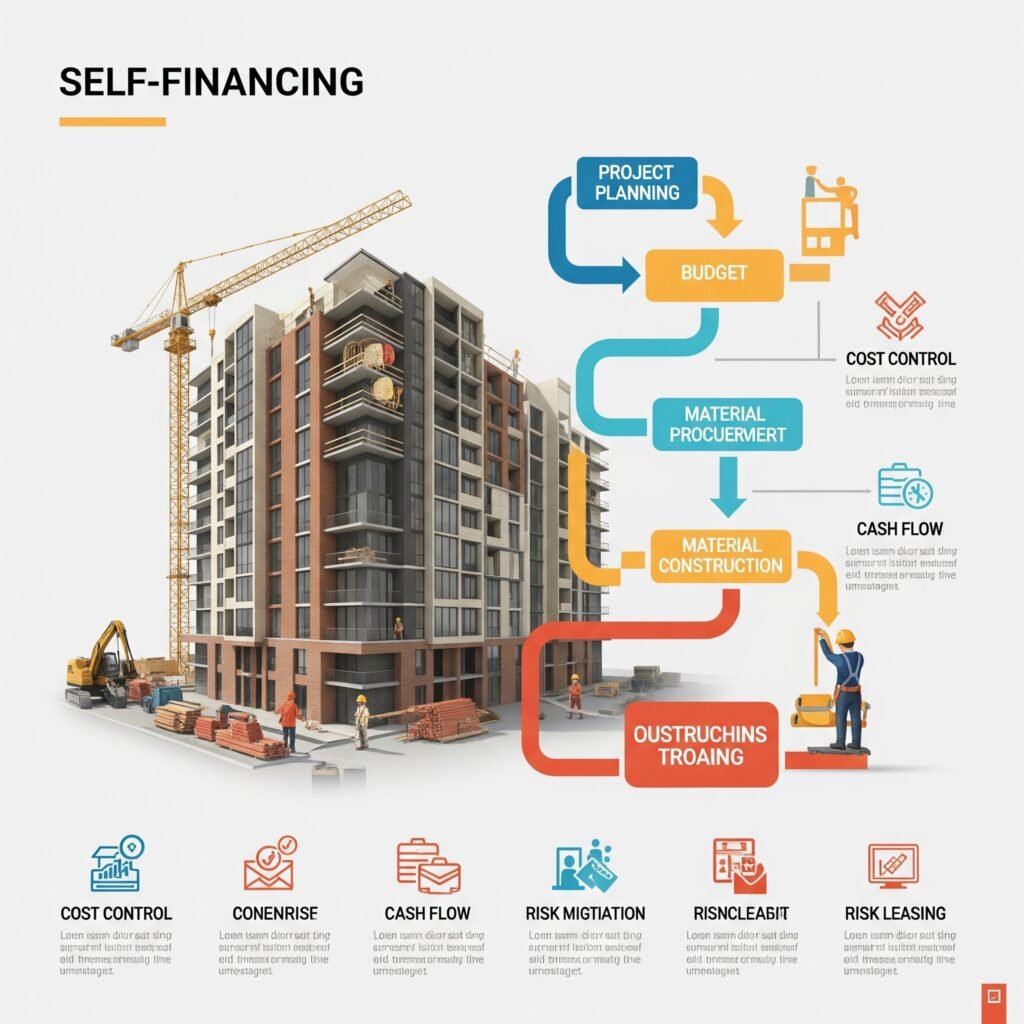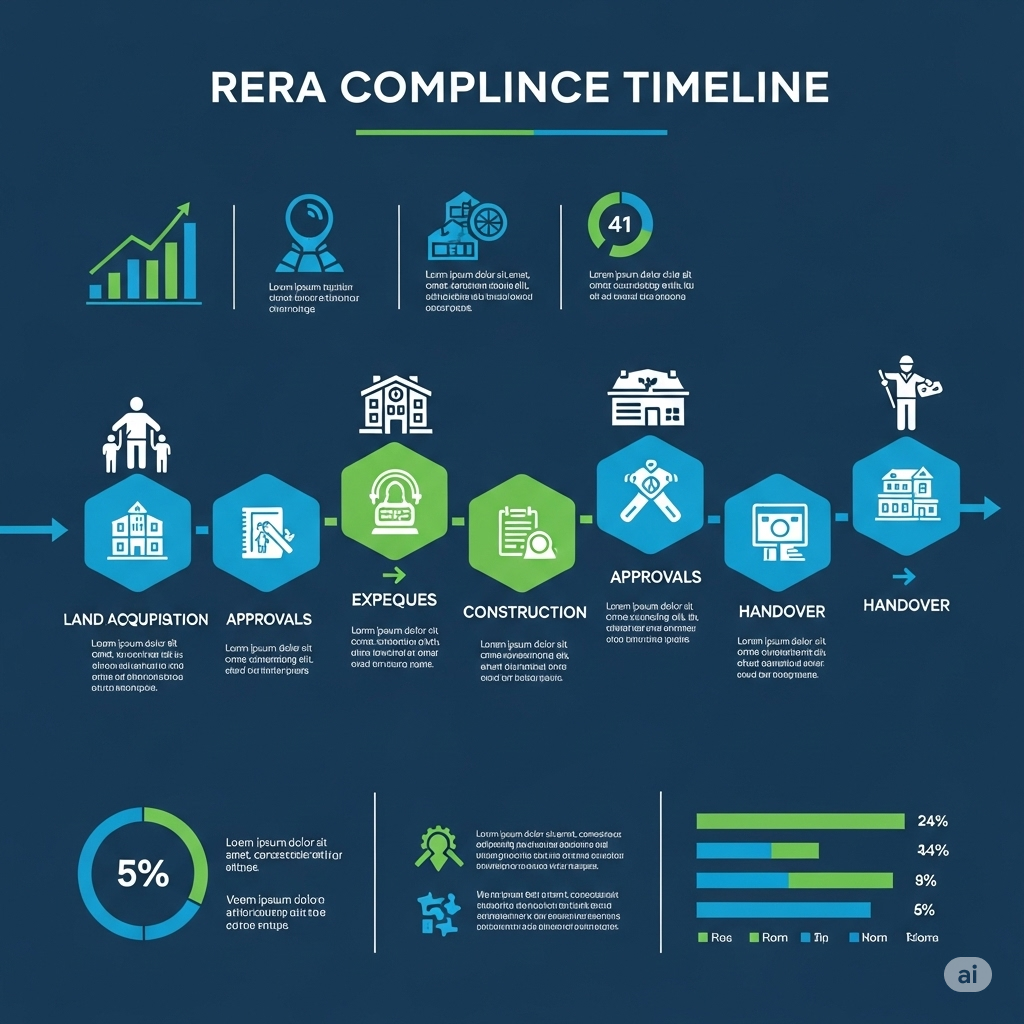Introduction
The decision between taking a home loan or self-financing your property purchase is one of the most critical financial choices you’ll make in your lifetime. With real estate prices soaring and interest rates fluctuating, understanding the complete financial landscape becomes essential for making an informed decision.
This comprehensive guide examines both financing options through multiple lenses including financial comparison, risk assessment, psychological factors, and strategic approaches. Whether you’re a first-time homebuyer, experienced real estate developer, construction professional, or student researching project reports, this analysis will provide you with actionable insights to make the best choice for your specific situation.
The importance of this decision extends beyond mere numbers on a calculator. It impacts your cash flow, investment portfolio, tax obligations, and long-term financial freedom. Construction professionals and real estate developers particularly need to understand these financing mechanisms as they directly affect project viability and profitability.

Key Methodologies & Financial Analysis Processes
Step-by-Step Financial Evaluation Framework
Phase 1: Initial Assessment
- Calculate total project cost including land, construction, and ancillary expenses
- Assess available liquid funds and investment portfolio
- Evaluate current income stability and future projections
- Review credit score and loan eligibility criteria
Phase 2: Comparative Analysis
- Run EMI calculations for different loan amounts and tenures
- Calculate opportunity cost of funds if invested elsewhere
- Factor in tax benefits and inflation adjustments
- Analyze total outflow over the project timeline
Phase 3: Risk Evaluation
- Assess job stability and income consistency
- Evaluate emergency fund requirements
- Consider market volatility and interest rate risks
- Review insurance coverage needs
Industry Standards and Best Practices
Following RBI guidelines and banking industry standards, the debt-to-income ratio should not exceed 40% of gross monthly income. International practices suggest maintaining 6-12 months of EMI amount as emergency reserves when opting for home loans.
Financial Comparison: The Numbers Game
Interest Cost Calculator Analysis
Let’s examine a practical example: A ₹50 lakh home loan at 8.5% interest rate over 20 years results in total repayment of approximately ₹85 lakhs. This means you pay ₹35 lakhs as interest over the loan tenure.
EMI Calculation:
- Principal: ₹50,00,000
- Interest Rate: 8.5% per annum
- Tenure: 20 years
- Monthly EMI: ₹43,391
- Total Amount Paid: ₹1,04,13,840
- Total Interest: ₹54,13,840
Home Loan EMI Calculator
Calculate your estimated monthly installments
Loan Details
Calculation Results
Opportunity Cost Analysis
If the same ₹50 lakhs were invested in equity markets with an average CAGR of 12%, the potential returns would be:
- Investment: ₹50,00,000
- CAGR: 12% over 20 years
- Final Value: ₹4,82,31,475
However, this comparison requires careful consideration of risk factors and market volatility.
Tax Benefits Breakdown

Home loan borrowers can claim significant tax deductions:
Section 24(b): Interest payment deduction up to ₹2,00,000 per year Section 80C: Principal repayment deduction up to ₹1,50,000 per year Section 80EEA: Additional interest deduction of ₹1,50,000 for first-time buyers
Maximum annual tax savings can reach ₹3,50,000, translating to substantial savings over the loan tenure.
Inflation Hedge Benefits
Home loans provide a natural hedge against inflation. As your income grows with inflation, the fixed EMI becomes a smaller percentage of your income over time. A ₹40,000 EMI today might represent 25% of your income, but could reduce to 15% after 10 years due to salary increments.
Material & Manpower Requirements for Decision Making
Documentation Requirements
For Home Loans:
- Income proof (salary slips, ITR, bank statements)
- Property documents (agreement, title deeds, approvals)
- Identity and address proofs
- Bank statements for 6-12 months
- Employment verification letters
For Self-Financing:
- Investment portfolio statements
- Liquid asset valuations
- Income tax returns
- Bank balance certificates
- Family financial contribution agreements
Professional Consultation Needs
- Financial advisors for investment planning
- Tax consultants for optimization strategies
- Legal experts for documentation review
- Real estate valuers for property assessment
- Insurance advisors for coverage planning
Deliverables at Each Stage & Impact Analysis
Pre-Construction Phase
Home Loan Route:
- Loan sanction letter
- Property legal verification report
- Insurance policy documents
- Disbursement schedule alignment
- Tax benefit calculation sheets
Self-Financing Route:
- Asset liquidation plan
- Cash flow projection
- Family agreement documents
- Investment withdrawal strategies
- Emergency fund preservation plan
Construction Phase
Home Loan Benefits:
- Staggered disbursement based on construction milestones
- Interest-only payments during construction
- Builder tie-up advantages
- Construction monitoring by bank
Self-Financing Advantages:
- Flexible payment schedules
- Better negotiation power with contractors
- No lender interference in construction choices
- Ability to modify plans without approvals
Post-Construction Phase
Home Loan Considerations:
- Full EMI commencement
- Property registration completion
- Insurance policy activation
- Tax benefit claim procedures
Self-Financing Outcomes:
- Debt-free property ownership
- Liquidity management requirements
- Investment portfolio rebalancing
- Future expansion planning flexibility
Stakeholders & Communication Matrix
Key Players in Home Loan Process
Primary Stakeholders:
- Borrower and co-applicants
- Lending institution (bank/NBFC)
- Property seller/builder
- Legal and technical evaluators
Secondary Stakeholders:
- Insurance providers
- Property registration authorities
- Tax consultants
- Financial advisors
Communication Protocols
Regular communication touchpoints include monthly EMI reviews, annual tax benefit calculations, property insurance renewals, and loan statement reconciliations. For self-financing, the communication matrix involves family members, investment advisors, and property maintenance teams.
Value Engineering Opportunities
Cost-Saving Techniques for Loan Takers
Balance Transfer Benefits: Switching from a 9% interest rate to 8.5% on a ₹40 lakh outstanding loan can save approximately ₹50,000 annually.
Prepayment Strategies: Making partial prepayments of ₹1 lakh annually can reduce the loan tenure by 3-4 years and save lakhs in interest.
Flexi Loan Accounts: Parking surplus funds in flexi accounts can reduce interest burden without losing liquidity.
Self-Financing Optimization
Staggered Construction Approach: Building ground floor first and expanding later can reduce immediate capital requirements by 40-50%.
Family Pool Financing: Informal family loans at 4-6% interest rates can be significantly cheaper than institutional loans.
Asset Liquidation Timing: Strategic selling of investments during market peaks can maximize available funds.
Risk Assessment & Mitigation Strategies

Job Stability Test
The 40% debt-to-income rule serves as a safety net. If your monthly EMI exceeds 40% of your income, you're at high risk of default. Self-financing eliminates this risk but creates liquidity challenges.
Emergency Fund Impact
Home loan takers should maintain 6-12 months of EMI as emergency reserves. Self-financers need even larger emergency funds as they lack the liquidity cushion that loans provide.
Interest Rate Volatility Management
Fixed vs. Floating Rate Scenarios:
- Fixed rates provide certainty but are typically 0.5-1% higher
- Floating rates offer potential savings but carry volatility risk
- Reset clauses allow switching between options
Health Insurance and Loan Protection
Critical illness or job loss can devastate loan repayment capacity. Loan protection insurance and adequate health coverage become essential for borrowers.
Psychological Factors & Behavioral Insights
Debt Anxiety Index
Research indicates that 68% of Indians experience stress over long-term loans. This psychological burden can affect decision-making, career choices, and family relationships.
Ownership Pride Bias
Cultural preferences for debt-free homes often override financial logic. The satisfaction of complete ownership sometimes justifies the higher opportunity cost.
Marital Harmony Considerations
Joint loans require spousal income disclosure and shared responsibility, which can strengthen financial transparency but may also create pressure points in relationships.
Loan-Specific Strategies
Balance Transfer Optimization
Switching lenders becomes beneficial when:
- Interest rate difference exceeds 0.5%
- Processing fees are lower than potential savings
- Loan tenure is sufficient to recover switching costs
Top-up Loan Potential
Once you've paid 20-30% of the principal, banks offer top-up loans at attractive rates for renovations, education, or business needs.
NRI Loan Considerations
Non-resident Indians face different dynamics:
- FCNR loans offer currency hedge benefits
- NRE loans provide rupee funding options
- Higher interest rates but lower processing requirements
Self-Financing Tactics
Gold Loan Bridge Option
Gold loans at 8-10% interest rates can provide quick liquidity for property payments while you arrange long-term financing or sell other investments.
Asset Liquidation Planning
Strategic selling sequence:
- Low-performing investments first
- Short-term deposits and bonds
- Equity investments during market highs
- Real estate as last resort
Black Money Pitfalls
Cash transactions exceeding ₹2 lakhs attract income tax scrutiny. Maintaining proper documentation and banking channels becomes crucial.
Hybrid Approaches
Partial Loan Model
The 50% self-funded and 50% loan approach optimizes benefits:
- Reduced EMI burden
- Partial tax benefits
- Lower interest outgo
- Maintained liquidity
Construction Phase Loan Strategy
Interest-only payments during construction reduce immediate cash flow pressure while allowing investment returns on remaining funds.
Loan for Land, Self-fund Construction
This approach provides:
- Lower loan-to-value ratios
- Better negotiation power
- Construction flexibility
- Phased capital deployment
Case Study: Real-World Implementation

Project Overview
Scenario: IT professional planning ₹80 lakh house construction in Bangalore
Available Resources:
- Liquid investments: ₹35 lakhs
- Monthly income: ₹1.2 lakhs
- Family contribution: ₹15 lakhs
Option 1: Complete Self-Financing
- Total liquid requirement: ₹80 lakhs
- Shortfall: ₹30 lakhs
- Need to liquidate long-term investments
Option 2: ₹50 Lakh Home Loan
- EMI: ₹43,391 (36% of income)
- Self-contribution: ₹30 lakhs
- Retain ₹20 lakhs as emergency fund
Solution Implemented: Chosen hybrid approach with ₹40 lakh loan and ₹40 lakh self-funding, resulting in ₹34,713 EMI (29% of income) while maintaining adequate liquidity.
Results and Key Takeaways
The hybrid approach provided optimal balance between cost efficiency and risk management. Total interest savings of ₹15 lakhs compared to full loan option, while maintaining financial flexibility.
Advanced Strategies for Different Stakeholders
For Real Estate Developers
Developers should consider construction finance options, revenue-based financing, and customer financing tie-ups to optimize project costs and improve sales velocity.
For Construction Professionals
Understanding client financing options helps in project planning, payment scheduling, and risk assessment for project completion.
For Individual Home Builders
Phased construction planning aligns with available finances, whether through loans or self-funding, ensuring project completion without financial strain.
Technology and Digital Tools
Modern financing decisions benefit from digital tools:
- EMI calculators for accurate projections
- Investment return calculators for opportunity cost analysis
- Loan comparison platforms for best rate identification
- Digital application processes for faster approvals
Future Trends and Considerations
Evolving Interest Rate Environment
RBI monetary policy changes directly impact home loan rates. Understanding rate cycles helps in timing loan applications and choosing fixed vs. floating options.
Digital Lending Revolution
Fintech companies are disrupting traditional lending with faster approvals, competitive rates, and innovative products like flexi loans and step-up EMI options.
Regulatory Changes
Recent changes in tax laws, loan regulations, and property registration processes affect the loan vs. self-financing decision matrix.
Risk Mitigation Strategies
Common Risks and Preventive Measures
For Home Loan Takers:
- Interest rate risk: Consider fixed-rate options during volatile periods
- Job loss risk: Maintain adequate insurance and emergency funds
- Property devaluation risk: Choose locations with strong fundamentals
For Self-Financers:
- Liquidity risk: Maintain diversified emergency funds
- Opportunity cost risk: Invest remaining funds strategically
- Inflation risk: Consider asset allocation adjustments
Contingency Planning
Both financing routes require contingency plans for changed circumstances like job loss, medical emergencies, or significant income changes.
Conclusion & Strategic Recommendations

The choice between home loans and self-financing depends on multiple factors including financial capacity, risk tolerance, investment opportunities, and personal preferences. Neither option is universally superior; the best choice varies based on individual circumstances.
Choose Home Loans When:
- You have stable income and good credit score
- Investment opportunities exceed loan interest rates
- Tax benefits provide significant savings
- You prefer maintaining liquidity for other investments
Choose Self-Financing When:
- You have adequate liquid funds without affecting emergency reserves
- Investment returns are uncertain or below loan rates
- You prefer debt-free ownership for psychological comfort
- You want maximum flexibility in construction and property decisions
Consider Hybrid Approaches When:
- You want to balance cost optimization with risk management
- Partial financing provides adequate liquidity while reducing debt burden
- You can optimize tax benefits while maintaining investment opportunities
The key to success lies in thorough analysis of your specific situation, consultation with financial experts, and regular review of your strategy as circumstances change.
Further Reading and Resources
For detailed loan comparisons, visit major bank websites and compare interest rates, processing fees, and terms. Investment planning resources from mutual fund companies and financial advisors can help evaluate opportunity costs. Real estate market reports provide insights into property value trends affecting your decision.
Remember that financial decisions of this magnitude require professional consultation and should not be based solely on general guidelines. Your specific circumstances, goals, and risk tolerance should guide the final choice.
This blog post serves as a comprehensive guide, offering different financing options for real estate projects. For specific guidance pertaining to your project, it is imperative to seek counsel from qualified professionals.consult with qualified professionals.




